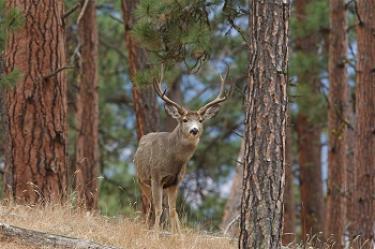Activities You Can Do for Healthy Deer Habitat
Management for healthy deer habitat
Like all wildlife species, deer benefit from healthy habitat. Managing your woodland for forest health will ultimately help all wild species. Here are some specific management actions to consider.
- Prescribed burning and thinning: Controlled burning provides multiple benefits depending on your woodland’s historic fire regimen. Thinning your woodland can have similar outcomes, and both are important for deer because they allow more sunlight to reach the forest floor. New forage growth occurs when more sunlight is allowed in.
- Plant native species: Native plants provide fruit, nuts, berries or browse for wildlife. And these plants can occur in natural meadows, edge habitat, disturbed soil, and open areas within the forest canopy. Get locally sourced native mixes when using a seed mix. Nonnative mixes can contain plants that will not support deer and may take over if they have invasive tendencies. When in doubt, check with a local wildlife or plant biologist. Note: Do not enhance habitat near roads, which will increase deer vulnerability to automobiles. Check out the Top Ten Native Plants in Each Region, provided by the National Wildlife Federation.
- Control invasive non-native weeds which will squeeze out native plants.
- Consider your seasonal management plan: Late summer is an important time for deer, when they forage to get enough food to survive the winter. Plan disruptive management activities outside of important seasons like this for deer. During management work, try to protect forage plants.
Native plant resources
- Native Seed Network: www.nativeseednetwork.org
- Heritage seedlings: www.heritageseedlings.com
Previous page
Next page
How can I get more tips?
It’s simple! Enter your email below.

